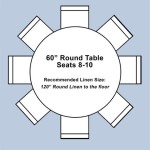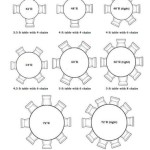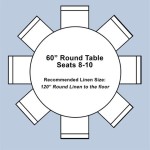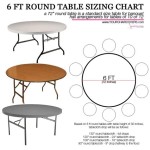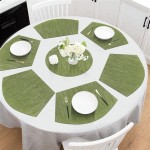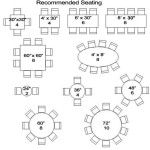How To Make A Simple Table Runner
Table runners offer a simple yet effective way to enhance a dining or living room table's aesthetic appeal. They can be used for everyday decor or special occasions, adding a touch of color, texture, and personality. Creating a basic table runner is a straightforward project, adaptable to various skill levels and readily customizable to individual preferences.
Choosing Materials
Selecting appropriate materials is crucial for a successful table runner project. Consider the following:
- Fabric: Choose a durable and aesthetically pleasing fabric. Linen, cotton, burlap, and even decorative canvas are excellent choices.
- Measuring Tape: Accurate measurements are essential for a well-fitting runner.
- Scissors: Sharp fabric scissors will ensure clean cuts and prevent fraying.
- Pins: Straight pins will hold the fabric in place during the sewing process (if applicable).
- Sewing Machine (Optional): While a sewing machine speeds up the process, a no-sew runner is entirely feasible.
- Iron and Ironing Board: Pressing the fabric ensures a smooth, professional finish.
- Fabric Glue or Hem Tape (For No-Sew Options): These are alternatives to traditional sewing.
Measuring and Cutting the Fabric
Accurate measurements are paramount for a well-proportioned table runner. Consider the following steps:
- Measure Table Length: Determine the length of your table.
- Desired Overhang: Decide how much fabric you want to hang over each end of the table. A common length is between 6 and 12 inches on each side.
- Calculate Runner Length: Add the desired overhang (multiplied by two) to the table length to get the total runner length.
- Determine Runner Width: Choose a width that complements your table and personal preference, typically between 12 and 18 inches.
- Cut the Fabric: Using the measurements, cut the fabric to the calculated length and width. Add extra inches to each side if you plan to hem the edges (typically 1 inch on each side).
Hemming the Edges (Sewn Method)
Hemming provides a clean finish and prevents fraying. Follow these steps for traditional hemming:
- Fold Over the Edge: Fold over one edge of the fabric by ½ inch and press with an iron. Fold over again by another ½ inch and press to create a double-folded hem. Pin in place.
- Sew the Hem: Using a sewing machine, stitch along the inner folded edge of the hem, securing it in place. Repeat this process for all four sides of the runner.
- Press Again: Give the finished runner a final press for a crisp, polished look.
Hemming the Edges (No-Sew Method)
For a simpler, no-sew approach, consider these methods:
- Fabric Glue: Use fabric glue to secure the folded edges of the fabric. Follow the manufacturer's instructions for application and drying times.
- Hem Tape: Iron-on hem tape provides a quick and easy way to create a hem without sewing. Follow the product instructions for application, ensuring proper adhesion.
- Pinked Scissors: If the fabric type allows (such as felt or fleece), using pinking shears to cut the edges can prevent significant fraying and eliminate the need for hemming altogether.
Adding Decorative Elements (Optional)
While a simple, unadorned table runner is elegant in its own right, consider adding embellishments to personalize it. These additions can enhance the runner's aesthetic appeal and create a more unique piece.
- Fabric Paint: Use fabric paint to create designs or patterns on the runner. Stencils can help achieve precise and intricate designs.
- Trim or Ribbon: Attach decorative trim or ribbon along the edges of the runner for added texture and visual interest.
- Appliqué: Add fabric appliqués in various shapes and colors for a personalized touch. Secure them with fabric glue or sew them onto the runner.
- Embroidery: Embroider designs or monograms onto the runner for a personalized touch.
- Lace or Fringe: Adding lace or fringe to the ends of the runner can create a more elegant and sophisticated look.
Caring for Your Table Runner
Proper care will extend the life and maintain the appearance of your table runner. The care instructions will vary depending on the chosen fabric and embellishments. Follow these general guidelines:
- Washing: Check the fabric care label for washing instructions. Some fabrics may require hand washing, while others are machine washable.
- Drying: Air drying is generally preferred to prevent shrinkage or damage to embellishments. If using a dryer, use a low heat setting.
- Ironing: Iron the runner as needed to maintain its smooth appearance. Follow the fabric care instructions for the appropriate iron temperature.
- Storage: Store the runner flat or rolled up to prevent wrinkles and creases.
Creating a simple table runner is a rewarding project that allows for creativity and personalization. By following these steps and selecting suitable materials, anyone can craft a beautiful and functional table runner to enhance their home decor.

Tutorial How To Make A Simple Table Runner Sew My Place

How To Make A Reversible Table Runner For Beginners

Simple Table Runner Diy The Sewing Loft

Quick And Easy Diy Table Runner Positively Splendid Crafts Sewing Recipes Home Decor

Simple Table Runners

How To Make A Simple Table Runner The Stitching Scientist Pattern Quilted Runners Patterns

Super Easy To Sew Table Runner Pink Polka Dot Creations

Simple Table Runners Learn How To Quilt Com

Easy Strip Table Runner

How To Make A Farmhouse Table Runner Well Purposed Woman
Related Posts

